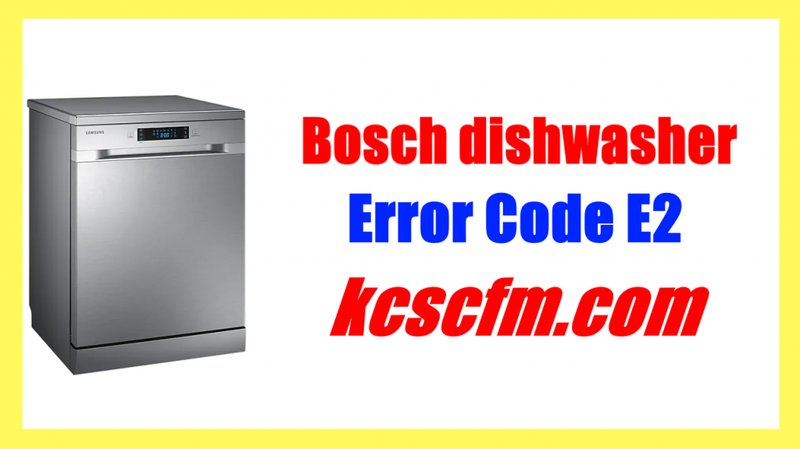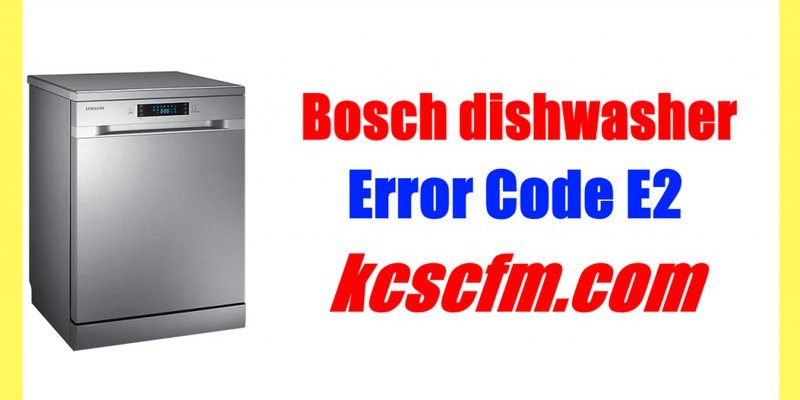
Error Code E2 on Bosch water heaters is often linked to temperature sensor issues. It might sound a bit techy, but think of it like a thermostat in your house that’s acting up. When the sensor isn’t reading the water temperature correctly, it can lead to erratic heating or the dreaded E2 error message. But don’t worry; you don’t have to be an engineer to keep this from happening again. There are some simple, everyday practices and checks you can do to ensure your water heater operates smoothly and efficiently.
Understanding the E2 Error Code
So, what exactly is this E2 error code? In simple terms, when your Bosch water heater displays a dreaded E2, it’s alerting you that the temperature sensor inside the unit is having trouble. This sensor, also known as a thermistor, is vital for monitoring and maintaining the correct water temperature. Imagine it as the brain that tells the heater when to kick into action. If the brain isn’t functioning properly, the rest can go haywire.
The error usually happens when the sensor is faulty, disconnected, or just not able to read the temperature correctly. This could be due to a variety of reasons — electrical issues, physical damage, or even dirt and grime buildup over time. It’s similar to how a dirty windshield impairs your view while driving; a dirty or damaged sensor can give false readings, causing the system to misbehave.
Understanding why this error occurs is the first step toward prevention. Knowing that this issue revolves primarily around the sensor helps narrow down the areas you need to focus on for regular maintenance. By keeping the sensor clean and ensuring all connections are intact, you can minimize the chances of encountering an E2 error in the future.
Regular Maintenance and Cleaning
To prevent the E2 error, regular maintenance and cleaning of your Bosch water heater should be at the top of your to-do list. Performing simple checks can make a world of difference. You wouldn’t drive your car indefinitely without an oil change, right? Similarly, your water heater thrives on routine care to stay in top shape.
Start by ensuring that the area around your water heater is clean and free of dust or debris. Just as dust on your bookshelf can gather over time, affecting its appearance, dust and grime on your heater can impact its function. Wipe down the exterior of the unit periodically and check for any visible dirt that may have accumulated on the sensor part itself.
Moreover, consider scheduling an annual inspection with a professional technician. It’s like going to the doctor for a yearly check-up; they can spot problems before they become serious. A professional will have the right tools and expertise to clean the internal components properly, such as removing scale build-up that can insulate the sensor and provide incorrect readings.
Temperature Sensor Checks
Checking the temperature sensor on your Bosch water heater is an essential step in preventing the E2 error. You might be thinking, “Isn’t that complicated?” Not at all! It’s quite straightforward, like checking the batteries in your remote control when it starts acting up.
First, ensure the unit is powered off to avoid any electrical hazards. Then, locate the temperature sensor usually found near the burner assembly. Gently inspect the sensor for any signs of damage or disconnection. If the sensor appears dirty, carefully clean it with a non-abrasive cloth. It’s a bit like cleaning your glasses — you want to remove the smudges without causing scratches.
Additionally, make sure that all wires and connections to the sensor are secure. A loose connection can cause inconsistent readings, triggering the E2 code. If you’re unsure or discover any significant damage, it’s best to consult with a professional technician who can provide repairs or replacements if necessary.
Addressing Electrical Issues
Bosch water heaters, like all electrical appliances, rely heavily on a stable electrical supply to function correctly. Think of it like your smartphone needing a stable recharge to keep going; an unstable connection can cause disruptions. Similarly, electrical issues can be a hidden culprit when it comes to the E2 error code.
Start by checking the power supply to ensure there are no loose wires or signs of wear. A minor glitch in the electrical supply can easily lead to major disruptions in how your water heater operates. If you’re comfortable with handling electrical components safely, make sure all connections are tight and secure. Otherwise, it might be wise to call in a professional to ensure everything is in tip-top shape.
Another important consideration is to avoid using high-powered appliances at the same time as your water heater. Overloading the circuit can cause fluctuations or temporary outages, leading to sensor errors. If you’ve noticed your lights flickering when using certain devices, it might be time to reevaluate your home’s electrical capacity with an electrician.
Preventative Tips to Keep Your Water Heater Running Smoothly
So, how do you ensure this dreaded E2 error doesn’t unexpectedly show up? Consistent maintenance is key. Regularly checking and cleaning the sensor, securing electrical connections, and being mindful of your water heater’s workload can go a long way. It’s like tending to a plant — if you water it regularly and provide proper sunlight, it will thrive.
Consider investing in a surge protector to safeguard against any electrical mishaps. Surge protectors act like a shield, absorbing any spikes in electricity that could potentially harm your appliances. This is particularly useful if you live in an area prone to power surges or outages.
Finally, always stay informed about your water heater’s performance. Keep an eye on any error messages or unusual behavior. Often, small indicators can hint at larger problems if left unaddressed. By acting promptly and performing regular check-ins, you can ensure your water heater remains a reliable source of comfort and warmth, leaving those chilly shower experiences a thing of the past.
